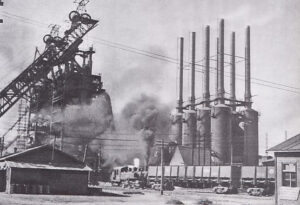The Economic Warfare that Led to Pearl Harbor
The conflict between the United States and Japan has long since been extinguished, but over 75 years ago, the two powers were locked in a tense struggle. Before Japan and the US became locked in bloody battles across the Pacific, and before the Imperial Japanese Navy launched their surprise attack on Pearl Harbor, the US had been engaged in waging economic warfare against Japan.
What ultimately led to Japan’s decision to attack the United States was less about expanding territory and more in response to the economic warfare that was waged during the early stages of World War II. While Germany was marching across Europe, the United States and Japan were locked in an entirely different fight, one fought with policies and numbers.
The War of Economics
Before the outbreak of war, Japan's economy was built upon manufacturing, but the country lacked the natural resources to keep its industries booming. For the raw materials such as coal, steel, copper, rubber, and petroleum, Japan had to rely on outside supplies, specifically from the United States and European colonies in Asia. For years, imports came from these sources, allowing Japan’s economy to thrive and enabling the creation of a strong military-industrial complex.
The relatively peaceful relations started to strain when Germany started to build up its army, preparing for the planned invasion of Poland in 1939. Along with starting a war in Europe, Germany’s advances and eventual alliance with Japan put the United States in a position that required a bold decision. Japan could be ignored and allowed to expand across Asia, effectively assisting in Germany’s own domination, or the vital resources it relied on could be withheld.
With the European colonies already cutting trade with Japan, on October 16th, 1940, the United States launched an embargo against Japan, ceasing export of all iron and steel. By July of 1941, Japanese assets within the United States were frozen and the export of oil halted.
It can be argued that the first push for war in the Pacific was actually the American embargo on trade with Japan, but with China suffering under the brutal Japanese occupation, few other options were available.
The Road to War
Japan knew that there was only one power that could effectively halt its advances in the Pacific, and the United States had just taken a forceful step towards that objective. With the threat of war on the horizon and the economic warfare continuing to raise tensions, the Japanese sought to take the first shot. It would need to cripple the United States Pacific Fleet and so, on December 7th, 1941, it directed an aerial fleet into Pearl Harbor with the intention of destroying the battleships moored along Battleship Row.
What started as a war fought with trade deals and embargoes erupted into an all-out confrontation across the Pacific, starting with the deaths of over 2,000 American servicemen at Pearl Harbor.








